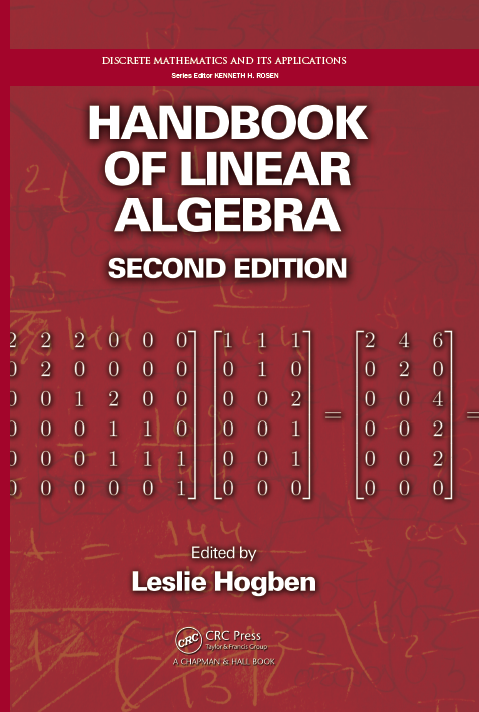Handbook of Linear
Algebra, Second Edition
 |
Leslie Hogben, Iowa State University, Editor Richard Brualdi, University of Wisconsin, Madison, Associate Editor G. W. Stewart, University of Maryland, Associate Editor CRC Press, (c) 2014. Available from CRC Press and Amazon. |
- Table of Contents
- Contributors
- Errata 01-Nov-2021
- Update on Open Problems 21-Apr-2014
Handbook of Linear Algebra
 |
Leslie Hogben, Iowa State University, Editor Richard Brualdi, University of Wisconsin, Madison, Associate Editor Anne Greenbaum, University of Washington, Associate Editor Roy Mathias, University of Birmingham, UK (retired), Associate Editor Published by CRC Press, (c) 2007. Available from CRC Press and Amazon. |